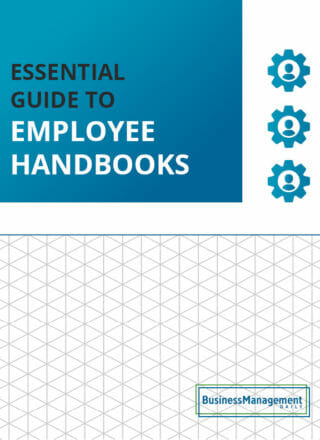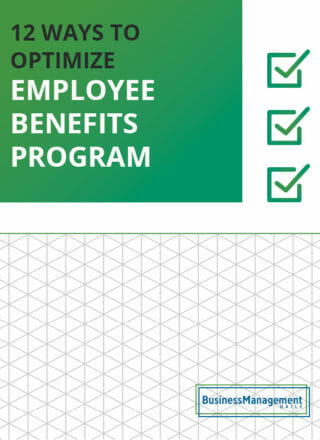Paid time off pto policies and guide
Unlocking the benefits: Why paid time off (PTO) matters
Whether you need time to get over a cold, furniture delivery requires someone over age 18 at home, or sunny California beaches keep calling your name, paid time off (PTO) enables missing work while still receiving regular pay.
This highly desirable benefit promotes self-care and better work-life balance. Employees can attend to health, rejuvenation, personal tasks, interests, and other matters of their choice without worrying about income loss.
Making the most of this benefit starts with understanding the types of PTO and your individual employer’s paid time off policies. Let’s explore the subject in detail.
Vacation, sick, and personal days: Knowing the difference
PTO typically consists of three main components.
-
Vacation time
People use this earned time off for rest, relaxation, and travel.
-
Sick leave
An employee can use a sick day when he experiences an illness or needs to attend a medical appointment.
-
Personal days
Personal leave covers miscellaneous reasons someone may need or want to miss work, such as running errands or chaperoning a child’s class field trip.
Note that federal law does not mandate that employers provide any of these types of paid leave. However, some states enact laws governing the minimum amount of PTO employers must offer.
Decoding your company’s PTO policy
Wise employees learn all they can about PTO benefits to make the most of them. Oftentimes, employers cover the topic during onboarding. Written information appears in the employee handbook as a point of reference.
What is important to know? Workers should possess a thorough understanding of these four topics:
-
Accrual rates and methods
Companies differ in how much paid time off they provide. Know how many days of each type of PTO you are entitled to for a given period.
Many employers operate on a fixed annual PTO system. They issue each worker a set amount of vacation, sick, and personal days at the start of the year for use over the next 12 months.
At some places, the number of vacation days varies by length of service. For instance, someone with the company for less than two years might receive five vacation days.
That number could jump to 10 vacation days for colleagues in the 2 to 5-year range and perhaps to 15 vacation days after exceeding that milestone. Such increases reward longevity.
Part-time employees and new full-time hires often operate on a different paid time off allowance. Instead of the employer automatically issuing a certain number of days, employees gradually earn time off based on the amount of time worked.
If you are in this situation, know your company’s accrual rate! You might be entitled, for example, to one hour of sick leave for every 30 hours you work.
-
Carryover policies
Some organizations follow a “use it or lose it” system. Employees forfeit any unused PTO at year’s end. Employers who choose this method may do so because they want their workers to take time off. Respite reduces burnout.
Others allow a carryover. People can rollover PTO from one year into the next. Many employees like this ability to create a PTO bank. Some want to take an extended vacation down the line. Others enjoy the peace of mind should a health situation require a lengthy medical leave.
Employers often set limits on the number of days an employee can bank. Learn this number to maximize your benefit!
For instance, your company allows a maximum of 30 vacation days. Once you’ve met this figure, rollover is no longer an option. Thus, use any new vacation time you are entitled to since it cannot be saved.
-
Payout policies for unused PTO
PTO payout refers to compensation employees receive for unused paid time off. This situation often occurs when an employee leaves the company or retires. The employer turns the accrued PTO into the cash equivalent.
At some workplaces, employees can “cash in” their unused PTO at the end of a calendar year. The extra money is their benefit rather than the time off.
Payout policies vary widely by individual employers. Workers should read related documents carefully and ask HR for clarification if necessary.
Employers should seek legal guidance when constructing payout policies (and all PTO policies, for that matter). Some states consider PTO part of earned wages and have laws to ensure workers are not short-changed.
-
Notice requirements for requesting time off
Employers typically establish procedures for asking for time off. An orderly process aids in bookkeeping and ensures adequate coverage to keep operations flowing while employees are away from the office on PTO.
Examine your employee handbook for details as to:
- Any forms that need to be filled out to request vacation/personal days.
- How much advance notice the employer requires.
- Who needs to approve the absence.
- Any blackout dates (some companies do not allow PTO during particularly busy stretches.)
- When you will be notified as to whether or not the PTO received approval (sometimes it gets denied because too many workers request the same dates.)
Advance notice is not always possible. You cannot predict waking up with a horrible stomach ache or needing to attend to a family member’s emergency.
Understand how to handle such scenarios from the start of employment. The ability to act fast is preferable to scrambling to figure out what to do.
Know who to contact and by what method. Perhaps texting your immediate supervisor is acceptable. Or, maybe calling a specific person in HR is the company’s preferred way of communication.
If your employer uses an automated system, know how to log into it and what information it will ask for. School districts, for example, often employ technology that records absences, asks if your position requires a substitute, and provides space to add helpful comments.
Other types of paid time off
Beyond sick, personal, and vacation days, paid time off policies may contain information on other instances when employees can receive compensation while away from the office.
-
Bereavement leave
Companies may allow time off to attend a funeral or otherwise grieve the death of a loved one. The amount of time (and how much of it is paid vs. unpaid leave) varies. Some employers may require “reasonable documentation,” such as a death certificate or obituary, before granting the days.
-
Jury duty
Federal law doesn’t require employers to compensate employees for absences due to jury duty, but some states have laws that do. Furthermore, many employers construct policies that provide paid time off to fulfill this civic duty.
-
Holidays and floating holidays
Most employee handbooks contain information on the holidays for which the office is not open for business. Know these dates and whether or not you are paid for them.
Some companies also issue floating holidays, with two or three days being the most common annual amount. A floating holiday is a paid day off when the company is open for business.
Employees often use floating holidays to celebrate cultural holidays, religious holidays, birthdays, and other meaningful observances. Some use them for federal holidays not on the company’s holiday schedule.
Others add the floating holiday to existing time off for a company-recognized holiday, such as taking the Wednesday before Thanksgiving.
Planning for while you’re away
Workers sometimes hesitate to take time off because they worry about how the office will fare without them. Forethought helps with this matter.
The week before your vacation, remind your supervisor and colleagues. This heads-up lets them plan accordingly, such as collecting your project data before then.
Secure coverage of essential duties. Instruct a co-worker on how to fulfill specific tasks while you are away.
Wrap up as many loose ends as possible. Without things hanging, you will worry less during your days off.
Inform clients of your absence. Construct voicemail and email messages stating the period you will be away and who on staff can assist.
Maximizing your time off for well-being
Ditch any guilt and instead think of using PTO to invest in yourself. Resting, recharging, enjoying hobbies, and spending time with loved ones enrich our lives.
Make the most of your well-deserved employee benefit with these three tips:
-
Start planning early
At some places, prime vacation slots are limited and go fast. If you want to visit your parents at Christmas, secure your vacation days early to avoid disappointment.
-
Unplug
The workplace can survive without you. Avoid work emails and calls. Set boundaries on what can be considered an “emergency.” This is your time to enjoy without intrusion.
-
Return refreshed
Finally, avoid the temptation to overschedule your time off. Packing in too much may leave you drained rather than refreshed upon returning to work.
Likewise, plan on easing back into work gradually. Feeling that you must tackle everything on the first day back is a recipe for anxiety. Focus on updates and priority tasks.
More resources:
How to choose a PTO policy for your business ![]()
The pros and cons of an unlimited PTO policy ![]()
PTO request policy: A comprehensive guide for employers ![]()






